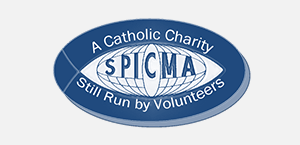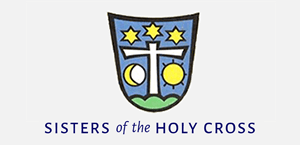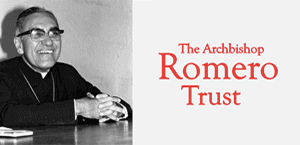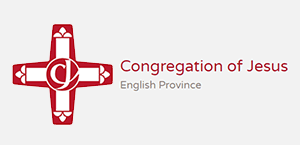Hide & Seek: Exhibition on Aftermath of Gunpowder Plot
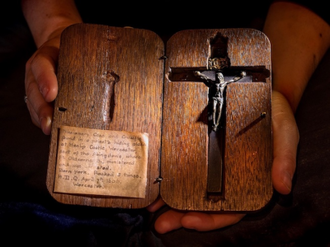
Fr Edward Oldcorne's cruxifix
A crucifix which once belonged to a priest is the only known item to survive of the thousands seized during raids on Catholic houses following the discovery of the Gunpowder Plot in 1605. The relic will be redisplayed as part of Hide & Seek: The Aftermath of the Gunpowder Plot at the Bar Convent Heritage Centre in York, the oldest living convent in the UK, from October 7- November 16.
The crucifix belonged to Father Edward Oldcorne who, despite being found innocent of any involvement in the Plot, was hanged, drawn and quartered because he was a priest; a treasonous act at the time. The label on the cross states that Oldcorne was 'Born York. Racked 5 times. H.D.Q. April 7th 1606. Worcester.'
Dr Hannah Thomas, Special Collections Manager, said: "This is one of the most remarkable items in our possession. We have worked closely with experts such as the late Michael Hodgetts, who painstakingly researched the history of all known priest's hiding holes in England and Wales, and we are now confident in believing that this is the only item surviving from the raids following the Gunpowder Plot.
"In the aftermath of the Plot, Catholic houses were raided across the country and priests went into hiding; hide and seek became a matter of life or death.
"Although Father Oldcorne was not connected to the plot, this Yorkshire priest became a wanted man because he attended school in York with Guy Fawkes, and had committed the treasonous crime of being a Catholic priest.
"Purpose-built secret spaces were cleverly created within the walls of Catholic houses for priests to hide. Father Oldcorne took to a hiding hole in a chimney breast at Hindlip Hall in Worcester for 12 days, he surrendered and was captured along with his servant Ralph Ashley, Father Henry Garnet and lay-brother Nicholas Owen. Nicholas Owen was a master carpenter and builder who was responsible for the majority of hiding holes for priests.
"All were killed, but Father Henry Garnet was the only one to have any knowledge of the Plot which he firmly opposed.
"As part of the new display, visitors can discover new research on the crucifix and Oldcorne in addition to the men he was in hiding with. We will also explore how priest hiding holes were cleverly disguised within the fabric of buildings and the ingenious ways in which Catholic households secretly continued to practice their faith including disguises, codes, invisible ink, and Catholic items concealed to look like every day objects."
The new display will run from October 7- November 16 and is included in admission to the exhibition. Monday- Saturday 10am-5pm (last admission 4pm). Adults: £6, Concessions: £4, Children £2, Family Ticket: £12.
Blessed Edward Oldcorne and the Gunpowder Plot
Oldcorne, who was friends with Gunpowder Plotters Guy Fawkes and brothers Christopher and John Wright at St Peter's School, York, was under suspicion as a Catholic priest and a Jesuit.
Oldcorne had been working secretly as a Catholic chaplain at Hindlip Hall, Worcester, for 14 years. In December 1605, Father Henry Garnet and lay-brother Nicholas Owen, who were also suspects, also sought refuge at Hindlip Hall, said to be the safest Catholic house in the country as it had so many concealed hiding places.
Along with Oldcorne's servant, Ralph Ashley, all four men went into hiding into two of the eleven hiding places available within the house and, although the house was searched for twelve days, they were never discovered. However, conditions became unbearable and they surrendered.
Oldcorne was tortured, but despite there being no evidence to suggest he was involved in the Gunpowder Plot, he was still put to death as a Jesuit priest. He was hanged, drawn and quartered on April 7 1606. Ralph Ashley, was executed alongside him. Both were Beatified in 1929.
Nicholas Owen worked in the service of Father Henry Garnet and is said to have masterminded Father John Gerard's escape from the Tower of London in 1597. He spent 18 years of his life building priest's hiding holes in the homes of Catholic families, despite ill-health and injury and without payment. It is said that his work was so ingenious that many of his hiding-places still remain undiscovered. He died while being tortured during the night of 1/2 March 1606. He was declared a Saint in 1970.
Father Henry Garnet had been told of the plot some months before, but in confession, so was forbidden by canon law to reveal it. However, he did protest the plan and attempted to deter the plotters. Despite this, he was found guilty of treason and was hanged, drawn and quartered on 3 May 1606.
LINK
Bar Convent: www.bar-convent.org.uk













